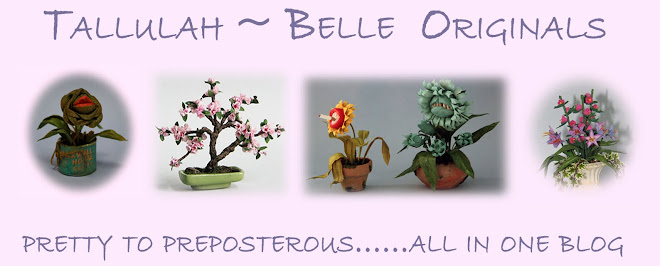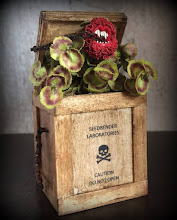Being a Brit, I was asked by Tiffany of MiniMischief “What would a proper British lady consider "real" tea?”
Given that so many Americans I have met are fascinated with all things British I thought I’d post it my reply here.
Firstly I have to tell you all I am certainly not what one would consider a ‘proper lady’ :-)
Tea, the drink, is the solution to all the problems of the world…at least that is how we Brits see it. No matter what the crisis, a good cuppa will solve it.
As Bernard-Paul Heroux said “There is no trouble so great or grave that cannot be much diminished by a nice cup of tea.”
Tea is the solution to everything as Gladstone so very well stated:
“If you are cold, tea will warm you. If you are too heated, it will cool you. If you are depressed, it will cheer you. If you are excited, it will calm you.”
Then there is what we call ‘Afternoon tea.’ It is often claimed that this tradition started with the Duchess of Bedford in 1840.
Back then dinner wasn’t served until somewhere around 8 and 9pm. This would mean there was a long period between lunch and dinner and, becoming hungry by late afternoon, the Duchess asked for tea, bread and butter and cake.
This caught on and so the tradition of afternoon tea was born….so the story goes.
It soon became very much a very social event, particularly for the women of this period. The ladies would dress up in their finest clothes, of long dresses, gloves and a hat and have tea together.
And then we have the ‘invention’ of the sandwich by the Earl of Sandwich. It is said that he was a heavy gambler and at one of these gambling sessions he did not want to leave the table so asked that he be bought some meat between 2 slices of bread…something he could eat without getting his fingers all messed up and ruining his cards….and so the sandwich was born.
Prior to the Earl’s ‘discovery’, there were sandwiches. They just weren’t called that.
A traditional afternoon tea would consist of the following items.
A selection of dainty sandwiches. Including, of course, the obligatory thinly sliced cucumber sandwiches, with the crusts cut off. Also very popular is egg and cress, ham and smoked salmon.
Preferably these will be cut into 4 triangles. I know it all goes down the same way but sandwiches are they definitely more visually appealing when cut into triangles.
Cakes, tarts and/or pastries are also served. These should ideally be displayed on a tiered china cake stand. Popular cakes are Victoria sponge and Battenberg.
Scones served with clotted cream and jam (jelly to the Americans)
And of course tea. This must be loose tea not tea bags. Made the traditional way in teapot (warmed first with boiling water) it is then poured into bone china cups that sit on matching saucers and drunk while very hot.
Some real tea connoisseurs (including my Grandmother) will even sit their tea cups in boiling water first as well, thus ensuring a perfectly scalding hot cup of tea.
When I was a child we would have Sunday afternoon tea at my Grandparents House.
Brits also have a tradition also for Sunday Lunch. This is very similar to an American Christmas or Thanksgiving dinner…except we do it once a week :-)
After eating such a big meal at lunchtime, a light afternoon tea was perfect to nibble on.
Our tea would be very similar to the traditional tea I have written about. We all had our own part in the preparation of it. I remember vividly that mine was to take canned pilchards and remove the bones then mix them with vinegar. A job I don’t think I could do nowadays.
In the winter we also added crumpets. A delight you rarely see in the USA. We’d toast and butter them and then they’d be placed in a dish in the oven to be kept warm. Of course all that butter melted and the ones in the bottom of the dish were the ones we fought over.
With the busy lives we all now lead, the tradition of afternoon tea has sadly died out. You will still find tea houses throughout the UK but mainly they appear to cater for the tourists.
There are also many English bars and tea houses throughout the USA. So far I have yet to come across one that is truly authentic. So many of these places seem to think that so long as you hang a few portraits of the Queen and fly a Union Jack you are good to go.
I would really love to own a little English themed pub and bed and breakfast and one day. Whether that will ever happen I have no idea…but it if certainly fun to think of the all ways in which I would do it. One thing I am sure of is that it would be truly authentic.
And on that note I am off to put the kettle on !
Given that so many Americans I have met are fascinated with all things British I thought I’d post it my reply here.
Firstly I have to tell you all I am certainly not what one would consider a ‘proper lady’ :-)
Tea, the drink, is the solution to all the problems of the world…at least that is how we Brits see it. No matter what the crisis, a good cuppa will solve it.
As Bernard-Paul Heroux said “There is no trouble so great or grave that cannot be much diminished by a nice cup of tea.”
Tea is the solution to everything as Gladstone so very well stated:
“If you are cold, tea will warm you. If you are too heated, it will cool you. If you are depressed, it will cheer you. If you are excited, it will calm you.”
Then there is what we call ‘Afternoon tea.’ It is often claimed that this tradition started with the Duchess of Bedford in 1840.
Back then dinner wasn’t served until somewhere around 8 and 9pm. This would mean there was a long period between lunch and dinner and, becoming hungry by late afternoon, the Duchess asked for tea, bread and butter and cake.
This caught on and so the tradition of afternoon tea was born….so the story goes.
It soon became very much a very social event, particularly for the women of this period. The ladies would dress up in their finest clothes, of long dresses, gloves and a hat and have tea together.
And then we have the ‘invention’ of the sandwich by the Earl of Sandwich. It is said that he was a heavy gambler and at one of these gambling sessions he did not want to leave the table so asked that he be bought some meat between 2 slices of bread…something he could eat without getting his fingers all messed up and ruining his cards….and so the sandwich was born.
Prior to the Earl’s ‘discovery’, there were sandwiches. They just weren’t called that.
A traditional afternoon tea would consist of the following items.
A selection of dainty sandwiches. Including, of course, the obligatory thinly sliced cucumber sandwiches, with the crusts cut off. Also very popular is egg and cress, ham and smoked salmon.
Preferably these will be cut into 4 triangles. I know it all goes down the same way but sandwiches are they definitely more visually appealing when cut into triangles.
Cakes, tarts and/or pastries are also served. These should ideally be displayed on a tiered china cake stand. Popular cakes are Victoria sponge and Battenberg.
Scones served with clotted cream and jam (jelly to the Americans)
And of course tea. This must be loose tea not tea bags. Made the traditional way in teapot (warmed first with boiling water) it is then poured into bone china cups that sit on matching saucers and drunk while very hot.
Some real tea connoisseurs (including my Grandmother) will even sit their tea cups in boiling water first as well, thus ensuring a perfectly scalding hot cup of tea.
When I was a child we would have Sunday afternoon tea at my Grandparents House.
Brits also have a tradition also for Sunday Lunch. This is very similar to an American Christmas or Thanksgiving dinner…except we do it once a week :-)
After eating such a big meal at lunchtime, a light afternoon tea was perfect to nibble on.
Our tea would be very similar to the traditional tea I have written about. We all had our own part in the preparation of it. I remember vividly that mine was to take canned pilchards and remove the bones then mix them with vinegar. A job I don’t think I could do nowadays.
In the winter we also added crumpets. A delight you rarely see in the USA. We’d toast and butter them and then they’d be placed in a dish in the oven to be kept warm. Of course all that butter melted and the ones in the bottom of the dish were the ones we fought over.
With the busy lives we all now lead, the tradition of afternoon tea has sadly died out. You will still find tea houses throughout the UK but mainly they appear to cater for the tourists.
There are also many English bars and tea houses throughout the USA. So far I have yet to come across one that is truly authentic. So many of these places seem to think that so long as you hang a few portraits of the Queen and fly a Union Jack you are good to go.
I would really love to own a little English themed pub and bed and breakfast and one day. Whether that will ever happen I have no idea…but it if certainly fun to think of the all ways in which I would do it. One thing I am sure of is that it would be truly authentic.
And on that note I am off to put the kettle on !





































That is all very interesting, Jayne. Now I know what Charles Dickens meant when he wrote about being "greased to the elbows" after having tea and crumpets.
ReplyDeleteAmericans used to have Sunday dinners, too - every week. I guess all the rush of modern life did away with it. How sad.
Same in England now as well Brenda.
ReplyDeleteYup...you certainly do get greased up to the elbows...taste sooo good though :-)
That was very interesting, Jayne. I watch the F word on the BBC, Gordan Ramsey is always talking about Sunday lunch and trying to get people back to that tradition.
ReplyDeleteThe F Word...tell me you mean Hells Kitchen and he hasn't a new show named that LOL.
ReplyDeleteI love Gordon.
We always cook a roast on a Sunday, my kids would go mad if they didn't get one. Its a least one day a week when we can all sit down together and eat. When I was a child our Traditional Sunday Tea was Shell Fish with bread and Butter. I still remember sitting there with a pin getting the winkles out of the shell.
ReplyDeleteAnd I have to say we love Crumpets with loads of Butter..
Ugh...that sounds as bad as removing bones from canned pilchards :-)
ReplyDeleteOne of the things I miss the most about 'home' is Sunday dinners.